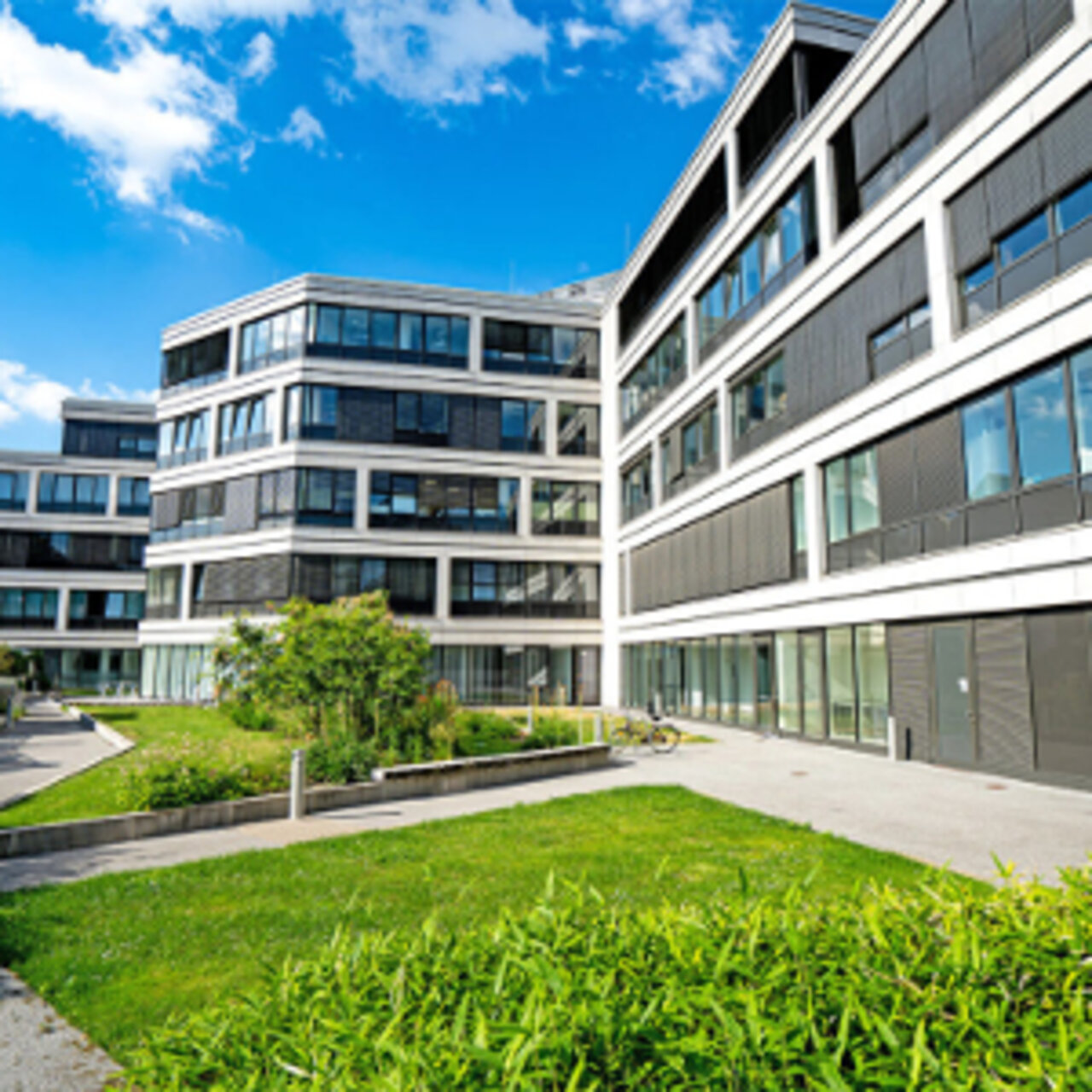Specialists in Intervertebral Disk Protrusion
11 Specialists found
Information About the Field of Intervertebral Disk Protrusion
What Is an Intervertebral Disk Protrusion?
The intervertebral disk lies as an elastic disk between two vertebras. It serves as a shock absorber between the vertebras and ensures that the spine remains mobile. The intervertebral disc distributes the load evenly among the vertebral bodies. It consists of an outer solid ring of fibrocartilage, the annulus fibrosus, and an inner soft, gelatinous core, the nucleus pulposus.
During disk protrusion, the annulus fibrosus tears, and the gelatinous nucleus shifts into the tear. This causes the disk to protrude. Disk protrusion is also considered a precursor to disk herniation, in which disk material leaks from the annulus fibrosus.
Most commonly, disk protrusion occurs in the lumbar spine. In about 2/3 of cases, the lumbar spine is affected, and in 1/3 of patients, the cervical spine is involved. In the thoracic spine, disk protrusions are very rare. Men are more often affected than women.
What Are the Causes of Intervertebral Disk Protrusion?
A disk protrusion is a degenerative disease that usually occurs between 30 and 50. From the age of 20, the vascular supply of the intervertebral disk recedes, and the annulus fibrosus changes its structure and becomes more susceptible to injury.
Minor secondary injuries (microtraumas) cause tears in the annulus fibrosus. Core components can get caught in these cracks, causing the disk to protrude. Risk factors for disk protrusion are obesity, insufficient exercise, a heavy or incorrect load on the spine, and a hollow back.
What Are the Symptoms of Disk Protrusion?
The primary symptom of a disk protrusion is pain, although the pain symptoms can vary. It may be that the disk protrusion manifests as acute lumbago. Patients often describe the pain as sharp and shooting in. However, chronic recurrent pain also occurs.
The patients sometimes experience the pain as dull, deep-seated, and challenging to localize when the lumbar spine is affected. Often, the pain spreads into the arms or legs. This is because the disk protrusion constricts nerves in the spinal canal or in the area where the nerves exit. The nerves running in the spinal canal exit between the vertebras near the disk and continue into the arms and legs. Therefore, the disk protrusion irritates the nerve roots and may cause pain spreading far into the arms or legs.
Symptoms vary depending on the location of the disk protrusion. If the disk protrudes into the cervical spine, the pain may radiate into the arms. If the thoracic spine is affected, patients have pain in the upper back and the area of the costal arches. If there is a disk protrusion in the lumbar spine, the pain is in the lower back and may spread to the legs. Back pain may be absent when the protrusion is in the high lumbar spine, and the patient may only suffer from knee pain.
Pressure on the nerves can cause pain and neurological deficits: The patients suffer from paresthesia, tingling, or numbness. Paralysis and loss of muscle function are also possible.
Interestingly, many disk protrusions cause no symptoms at all. In one study, herniated disks in the lumbar spine were found by magnetic resonance imaging in 20 to 30% of healthy individuals under 60 years. They were even more common in older individuals. Herniated disks in the cervical spine are also very common in older people without causing pain.
How Is Disk Protrusion Diagnosed?
The doctor suspects disk disease based on symptoms and clinical examination. Typical disk diseases are nerve root irritations and the resulting radiating pain in the arms or legs. Such complaints rarely occur in other conditions.
Also, discomfort and numbness are indicative of intervertebral disk disease. The doctor palpates the affected area and, if necessary, checks the function of the nerves and reflexes. If the patient only suffers from back pain, it is more difficult to distinguish a herniated disk from non-specific back pain. If there are no signs of paralysis or sensory disturbances, further diagnostics are not routinely performed at first.
If the pain is severe or persistent and refractory to treatment, diagnostic imaging is performed if neurological symptoms are present. Magnetic resonance imaging (MRI) is best suited for this purpose, but an X-ray or computed tomography can also be helpful in some instances. However, the degenerative changes detected with imaging techniques do not always correspond to the severity of symptoms. Therefore, magnetic resonance imaging is also used to exclude other severe conditions with similar symptoms.
How Is Disk Protrusion Treated?
Disk protrusion should be treated conservatively, if possible, which means without surgery because, in most cases, the symptoms improve spontaneously after some time. Instead, the patient is given painkillers, for example, ibuprofen, paracetamol, or metamizole. In cases of severe pain, the physician may also prescribe opioids.
In addition, other medications are sometimes used that are not primary pain relievers but help relieve the discomfort. For example, muscle relaxants may be given to relax the muscles. Injection of a local anesthetic or glucocorticoid into the affected area also helps with the pain. Pain therapy does not cause the protrusion to regress. It only relieves the symptoms.
Pain therapy is combined with other measures. Exercise therapy is essential. In the case of disk protrusion in the lumbar spine, the patient should, if possible, continue with their daily activities and should not rest in bed. Physical therapy, physiotherapy, heat therapy, massage, and acupuncture may also help. Patients may benefit from immobilization with a neck brace during the acute phase if the cervical spine is affected. Physical therapy should then be started.
Patients with severe psychological distress are at increased risk of the condition becoming chronic. It can also contribute significantly to chronic pain how the patient deals with it. Therefore, patients are recommended behavioral therapy or a pain management program if chronic pain develops.
Ideally, symptoms should improve steadily within 2 to 4 weeks with conservative therapy. If this is not the case or the pain returns, surgery may become necessary. Particularly severe cases also require surgery.
Can a Disk Protrusion Regress?
In disk protrusion, the core material can move back to the center. However, a disk protrusion regresses less frequently than a herniated disk. This is because the core substance that leaks out in a herniated disk usually breaks down better.
What Is the Course and Prognosis of Disk Protrusion?
The course of the disease varies greatly. All gradations are possible from complete freedom from symptoms to severe pain and severe neurological symptoms. In 80 to 90% of cases, the symptoms improve spontaneously. In some cases, the pain improves quickly within days or a few weeks with conservative therapy. However, it can also take a long time for improvement to occur. Therefore, surgery is often carried out after 6 to 12 weeks of conservative therapy without success. The chances of success of surgery for herniated disks in the lumbar spine are between 75% and 90%.
When Should a Herniated Disk Be Operated on?
Since symptoms often improve spontaneously, conservative therapy is usually attempted first. However, there are also cases in which surgery is required. Surgery is carried out to reduce pain and prevent permanent neurological damage.
Compelling reasons for surgery are progressive or acute severe symptoms of paralysis or a disturbance in bladder and bowel emptying. In such cases, surgery must be carried out as soon as possible, within 48 hours.
Surgery is also considered for therapy-resistant or severe pain or mild motor function deficits. In the case of low back pain without leg pain, surgery is rarely carried out because, in that case, surgery is unlikely to help better than conservative therapy. However, if the patient has primarily leg pain, surgery may improve it.
In the long run, surgery often does not help better than conservative therapy. After one to two years, they operated, and conservatively treated patients have recovered similarly well from the symptoms. But with surgery, patients recover faster in many cases. Therefore, surgery should be considered if conservative therapy does not improve in the initial weeks and patients suffer from severe discomfort.
Surgery should not be delayed too long because the success rate is more promising if carried out earlier. Early surgery relieves pain more quickly, and neurological deficits also regress faster. When waiting for the surgery for one year, there is no longer much difference between operated and non-operated patients.
Literature:
- Grifka J., Krämer J. (2013), Orthopädie Unfallchirurgie, 9.Auflage, Springer Verlag, Berlin Heidelberg
- Deutsche Gesellschaft für Orthopädie und Orthopädische Chirurgie e.V. (2020), S2k Leitlinie zur konservativen, operativen und rehabilitativen Versorgung bei Bandscheibenvorfällen mit radikulärer Symptomatik, AWMF online. Link: https://www.awmf.org/uploads/tx_szleitlinien/033-048l_S2k_Konservative-operative_rehabilitative-Versorgung-Bandscheibenvorfall-radikulae_2020-09_01.pdf (12.01.2021)
- Deutsche Gesellschaft für Neurologie (2018), S2k Leitlinie Lumbale Radikulopathie. AWMF online, Link: https://www.awmf.org/uploads/tx_szleitlinien/030-058l_S2k_Lumbale_Radikulopathie_2018-04.pdf (12.01.2021)
- Deutsche Gesellschaft für Neurologie (2017), S2k Leitlinie zervikale Radikulopathie. AWMF online, Link ttps://www.awmf.org/uploads/tx_szleitlinien/030-082l_S2k_Zervikale_Radikulopathie_2018-01-verlaengert.pdf (12.01.2021)
- Mayer. H.M., Heider F.C. (2016), Der lumbale Bandscheibenvorfall, Orthopädie und Unfallchirurgie, 2016, S. 427-447










